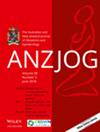Gender representation in obstetrics and gynaecology leadership
Abstract
Background
Women in leadership in obstetrics and gynaecology in Australia and Aotearoa New Zealand have historically been underrepresented, despite forming a significant portion of the workforce. This study extends prior research from 2017, examining shifts in gender representation, attitudes, and perceived leadership barriers within the specialty.
Aims
The study aims to evaluate changes in gender diversity among leadership positions in the Royal Australian and New Zealand College of Obstetricians and Gynaecologists (RANZCOG) and accredited training hospitals since 2017. Additionally, it seeks to understand current attitudes toward leadership and identify perceived barriers among RANZCOG consultants and trainees.
Materials and Methods
A cross-sectional approach was employed, utilising publicly available information, a survey distributed to RANZCOG members, and data from accredited training hospitals. Gender representation in leadership positions was analysed, and survey responses were collected from consultants and trainees to evaluate attitudes and perceived barriers.
Results
The study reveals an increase in women's representation in RANZCOG leadership, particularly on the council and in clinical leadership positions. While the proportion of women trainees remained stable, there was a noteworthy increase in women specialists. Survey responses revealed shared perceptions on leadership qualities but diverged on barriers, with more women expressing concerns about skillsets, caring responsibilities, and mentorship support.
Conclusions
The findings underscore substantial progress in achieving gender equity in obstetrics and gynaecology leadership roles, attributed to RANZCOG initiatives, societal changes, and improved policies. Ongoing efforts, including structured mentorship and flexible arrangements, are recommended to sustain and further enhance gender representation and address specific barriers identified by women in the specialty.

 求助内容:
求助内容: 应助结果提醒方式:
应助结果提醒方式:


